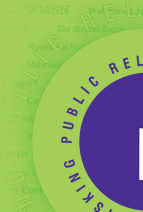09-11-2009
Clunkers program is factor in 41 percent boost in new vehicle sales in region
KEN SINGLETARY
State Journal archives
Local auto dealers Friday credited an uncharacteristic double-digit surge in new car and truck sales in August to the government's Cash for Clunkers program - and some were even betting the good times would continue.
"Even though Clunkers is over, it seems like (consumer) confidence for large purchases is continuing to increase, based on our showroom traffic," said Allen Foster, general manager of Smart Motors in Madison.
New car and truck sales in Dane County were up 40.4 percent compared to last August, according to a report by Reg-Trak, a Waterloo automotive research firm. That echoed a 41.1 percent August increase in the south-central Wisconsin region, which includes Dane, Columbia, Dodge, Green, Iowa, Jefferson, Lafayette, Rock and Sauk counties.
The increase locally and across the country has been widely attributed to the Clunkers program, which ended Aug. 24. The program sparked sales by giving new car buyers discounts of up to $4,500 if they traded in a less fuel-efficient, older vehicle.
At Smart Motors, the program prompted 279 sales, or about a 30 percent increase, Foster said.
"I would definitely say Cash for Clunkers was a big part of the boost, not only for us but for the industry last month," he said.
But Foster and Monica Winkler, senior marketing manager for Madison's Zimbrick Motors, both said there were some reasons that new car purchases could remain healthy.
"There are indications that the program has got people thinking about cars again," Foster said.
Winkler said additional new car sales could come from those who are planning a purchase this year but couldn't use the program because they didn't have a qualifying clunker to trade. But if they still want a new car, there are still plenty of dealer and industry incentives available that can make a new car purchase more affordable.
In addition, Winkler said, dealers are seeing that there's less used-car inventory and selection available now, with good used vehicles that have low mileage commanding higher prices than consumers are used to paying.
"They may see that the numbers for a good used car are a lot closer to a new car than they were before," she said. "And they might figure they'll just buy the new car because (they reason that) 'Every mile will be mine.'"
On the paperwork side, Foster and Winkler said most dealers were still waiting for many of their owed payments from the government for deals made under the program.
Foster said he'd received payments for about half of his sales, close to three weeks after the program's end. Dealers originally had been promised they would receive their payments within 10 days of the sales.
"They missed that mark by quite a bit," he said. "It was a great program for business, but it was poorly administered."
Winkler said Zimbrick dealerships also were reporting government payments coming in, and though they weren't complete, she said the pace of payment seemed to be improving. New staff added by the government may have helped with that, she said, along with the greater expertise in the process by dealers themselves.
"We've probably gotten better at doing the paperwork correctly, so there are less rejections" requiring time-consuming re-submissions, she said.
Karen Rivedal, State Journal
Smart Motors | 








